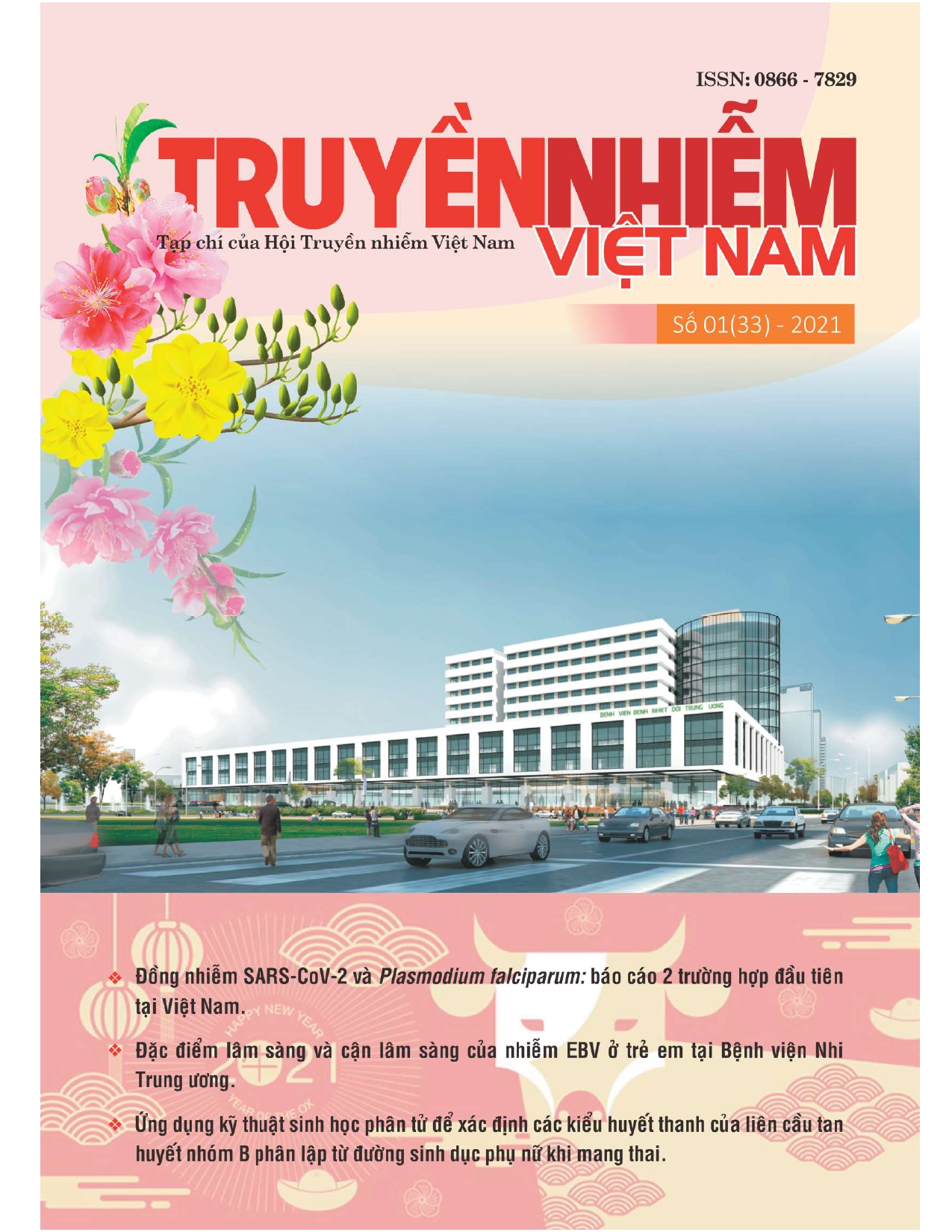IDENTIFICATIoN oF RESISTANT GEN mUTATIoNS IN CHRoNIC HEPATITIS B PATIENTS TREATED IN THE NATIoNAL HoSPITAL FoR TRoPICAL DISEASES (2014 -2017)
Main Article Content
Abstract
Objectives: Identification of HBV resistance mutations and their association with treatment regimens in chronic hepatitis B patients.
Subjects and methods: Patients with chronic hepatitis B, who were being treated with nucleotide - analogue antiviral drugs (NUCs), examined and tested for resistance mutations of the Hepatitis B virus (HBV) at the National Hospital for Tropical Diseases from January 2014 to December 2017. The study was conducted according to the method of cross - sectional descriptive, retrospective research.
Results: The prevalence of drug resistance was 24.3%. Mutation status was determined in both forms of single - drug resistance and multi - drug resistance, in which, the rates of multi-drug resistance and the single - drug resistance were 70.6% and 29.4% respectively. No patients infected with the HBV strains had TDF resistance mutations. Among multi - drug resistant HBV strains, there were 11/12 strains had ETV resistance mutations. Out of 24 patients who collected medical data, 15 patients were treated with TDF (1 tablet/day) (62.5%), 7 patients were treated with ETV (1 tablet/day) (29.2%) , the number of patients treated with ETV (2 tablets/day) and LAM (1 tablet/day) were 1 (4.2%). The difference between the prevelance of resistance mutation and no resistance mutation of HBV in different treatment regimens was statistically significant with p = 0.01. The rate of HBV resistance mutations in TDF treatment regimen (1 tablet/day) is not much lower (0.026 times) compared to ETV (1 tablet/day) with p = 0.01, 95% CI.
Conclusion: The majority of patients infected with HBV strains that had MDR - mutations; none of the HBV strains had TDF - resistant mutations. The current preferred treatment for chronic hepatitis B was TDF, then to ETV. The difference between the rate of resistance mutation and no resistance mutation of HBV in different treatment regimens is statistically significant.
Article Details
Keywords
Hepatitis B virus, nucleotide(s) analogue antiviral drug, NUCs resistance mutation


